
-RESERVACION HOPI-What Do These Two Areas Have In Common?
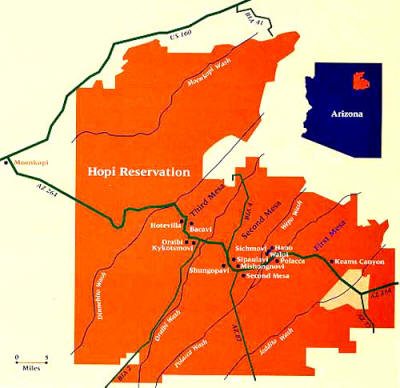
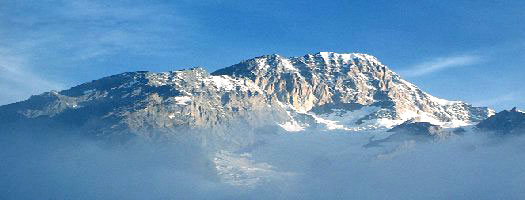
Hopis call themselves Hopitu - The Peaceable People
Hopis, meaning good, peaceful or wise, live in northeastern Arizona at the southern end of the Black Mesa. A mesa is the name given to a small isolated flat-topped hill with three steep sides called the 1st Mesa, 2nd Mesa, and the 3rd Mesa. On the mesa tops are the Hopi villages called pueblos. The pueblo of Oraibi on the 3rd Mesa started in 1050, and is the oldest in North America that was lived in continuously. Read about Black Mesa and Holy Mountain, Mt. Meru.
ANCESTRY
Evidence suggest that the Hopi consist of the descendants of various groups that entered the country from the north, the east, and the south, and that a series of movements covered a period of probably three centuries, and perhaps considerably longer.
Related to people of the various Pueblos to the east, the Hopis never actually had a single group identity--they were independent villages, sharing with the Zuni and otherPueblos a basic culture and view of the sacred, while sharing among themselves their own (Uto-Aztecan) language base.
ASTRONOMY - ET’S - UFO’S
Native Americans believed in constellations in many cases they believed in the same formations for stars that we do. Their constellations seemed to be marked by the same knowledge that western civilizations on the other part of the globe was aware of. They call them by different names but the star arrangements were very similar.
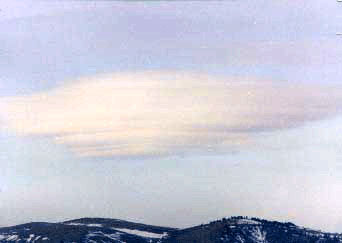
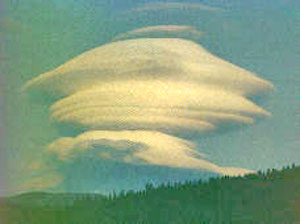
They believed in maps that have been drawn. That they existed at the center of the earth or Turtle Island. That beyond them was the sky and that beyond the sky were dimensional portals or sky holes as they called them. Beyond the dimensional portals was an area that they call the Ocean of Pitch, were the beauty of the night sky and the galaxies spun out towards them. Beyond that were the boundaries of the universe. And that set along the rim at the boundaries of the universe were 4 different extraterrestrial groups.
They believed in Achivas the sacred ceremonial places to honor the earth. These are the places that Shaman would go into the earth to do their most sacred work. The reason that Achivas are built into the earth for sacred work is because according to legend, at the destruction at each of the ages of mankind the people that were pure of heart went down into the buxom of the earth and there remained protected. According to them they dwelt in the center of the earth with a group of beings that they call the Ant People.
Drawings of the Ant People are remarkable similar to the Grey aliens of today - large heads - little stocky bodies - long spindly fingers - in some cases 4, 5, or 6 digits.
Some of these drawings have the indication of telepathic thought waves coming from the beings’ head themselves.
The Native Americans believed that the home of the Kachinas was on top of a mountain where there were great cloud formations. Today we know that UFO’s often hide in what we call Lenticular Clouds, which are cloud formations that seem to be produced to conceal the ships from the visible eye spectrum. Real lenticular cloudsmove with the rest of the clouds. Whereas the UFO clouds do not - often sitting 5 hours in one place.
The Hopis called the Pleiadians the Chuhukon, meaning those who cling together. They considered themselves direct descendents of the Pleiadians.
The Navajos named the Pleiades the Sparkling Suns or the Delyahey, the home of the Black God.
The Iroquois pray to them for happiness.
The Cree came to have come to earth from the stars in spirit form first and then became flesh and blood.
Each year a medicine man performs the green corn dance where he takes 7 ears of corn from 7 fields of the 7 clans to insure a healthy harvest.
Early Dakota stories speak of the Tiyami home of the ancestors as being the Pleiades. Astronomy tells us that the Pleiades rise with the sun in May and that when you die your spirit returns south to the seven sisters.
They believe that Mythic Mountain is actually the home of the Kachinas. This mountain top is a sacred one. Being the home of the kachina spirits it is the place where all of the large mythic beings they honor in their rituals land.
"We come as clouds to bless the Hopi people" is a quote passed from generation to generation.
The Hopi Indian UFOs
Hopi Indian legends tell of a sure certainty in the future that the tribe’s faithful will be lifted to other planets on the Day of Purification. And they watch and wait for the UFO’s that will take them there. The Christian version of the rapture??
The legend is borne of an ancient rock carving near Mishongnovi, AZ, depicting a dome-shaped saucer object and maiden that has become a core part of the tribe’s religious beliefs. Elders in the Hopi community have said they perceive UFOs as having a direct connection with the old petroglyph drawing and the foretelling of visitors from space who arrive for the Day of Purification.
On that day, "all wicked people and wrong-doers will be punished or destroyed," said the Prescott Daily Courier in 1995. The newspaper reported on a visit to Prescott by Hope Chief Dan Katchongva, who with two others from the tribe came to investigate "the rash of UFOs in the summer of 1970.
The chief told the newspaper that,"we believe other planets are inhabited and that our prayers are heard there. The arrow on which the dome-shaped object rests stands for travel through space. The Hopi maiden on the dome-shaped drawing represents purity. Those Hopi who survive Purification Day will travel to other planets. We, the faithful Hopi have seen the ships and know they are true."Chief Katchongva also told of Hopi prophecies that say his people will be divided three times before the True White Brother arrives to take the faithful away. He said the first division occurred in 1906, when Chief Yukiuma were driven from the old town ofOraibi to Hoteville. The second division, said the chief, happened in 1969, when contact was made with a flying saucer that whispered a message to the tribe.
The third division is said to be the precursor of the Purification day, and until it arrives, the chief told the newspaper, "many Hopi men wear their bang haircut that represents a window from which they continue to look for the True White Brother who will arrive with matching pieces of the stone petroglyph.
But Chief Dan Katchongva won’t see the day come or perhaps he will. He’s been missing since 1972, lost to the tribe while walking to a valley where a UFO had just been seen.
Staff Writer Sally Suddock - X-Factor Magazine
Kachinas are also used in the Hopi tribes. They are connected to powerful ancestor spirits called to bring rain to help the crops grow. There are over 300 different Kachinas. There is a prophecy about the return of the Blue Kachina to herald in the Fifth Age of Man.
PROPHECY
Hopi prophecies are very famous - but as with all prophecies - their timeline became invalid after 1939 when space/time altered.
The concepts are fundamentally correct but the timeline for them to play out is undetermined.
The Hopi Indians are the Record Keepers of the Native Americans.
RELIGION
The people of the Southwest, along with the Southeast had full-time religious leaders with shrines or temple buildings. Most Native Americans believe that in the universe there exists an Almighty, a spiritual force that is the source of all life. The Almighty belief is not pictured as a man in the sky, but is believed to be formless and exist in the universe. The sun is viewed as the power of the Almighty.
They are not worshipping the sun, but praying to the Almighty, and the sun is a sign and symbol for that. Native Americans show less interest in an afterlife unlike theChristians. They assume the souls of the dead go to another part of the universe where they have a new existence carrying on everyday activities like they were still alive. They are just in a different world.
The religious and ceremonial life of the Hopi centers in the kiva, which is simply a room, wholly or partly subterranean and entered by way of ladder through an opening in the flat roof. While the membership of the kiva consists principally of men and boys from certain clan or clans, there is no case in which all the members of a kiva belong to one clan - a condition inseparable from the provision that a man may change his kiva membership, and in fact made necessary by the existence of more clans than kivas. It is probable, nevertheless, that originally the kivas were clan institutions."
HOPI SNAKE PRIEST
The Navajo name for the Hopi is Anazazi which means "ancient enemies".
The cliff painting of the Mesa Verde and other areas are said to be "guides" for their warriors and they claim that the "snake-shaped" mounds in the eastern United States were built by their ancestors.
The " Snake Dance" is performed even today. The dance takes about two weeks to prepare and the snakes are gathered and watched over by the children. The snakes are usually rattle snakes and are dangerous but no harm seems to befall the children. Before the dance begins the dancers take an emetic (probably a sedative herb or hallucinogenic) and then dance with the snakes in their mouths.
There is usually an Antelope Priest in attendance who helps with the dance, sometimes stroking the snakes with a feather or supporting their weight. After the dance the snakes are released to carry the prayers of the dancers.
SPIRITUAL
Beside the trail that leads from the Hopi mesas to an ancient shrine where salt was gathered in the Grand Canyon, a large boulder bears the markings of clans which carved their emblems into the rock each time they passed on a pilgrimage.
From various quarters, the Hopi have brought with them in their migration from other regions or have borrowed from other pueblo a mass of religious practices, and the result is a complex presenting many anomalies and obscurities. They recognize a very large number of deities, and of none can it be said that he is supreme. The explanation may be that that each was the principal deity of some one group that entered into the making of the present Hopi people. Numerous ceremonies are performed at proscribed times, which are determined by the position of the rising sun with reference to certain landmarks or by the moon.
Hopi/Anasazi
Many of the mysteries of the Anasazi have been solved in the last 20 years. Archaeologists are fascinated by what they’ve been discovering about what has been the biggest puzzle of all: How did an entire civilization and culture just suddenly vanish from the face of the planet about 650 years ago?
Before serious study was given to the disappearance of the Anasazi, this central mystery had fueled a whole raft of theories, especially among New Age and UFO groups: The Anasazi had been lifted off in space ships; they had discovered portals into other dimensions of space and time; or they had mastered nodal energy centers that are scattered around the whole region. (A few hundred miles away, in Sedona, Arizona, you can help the local economy by taking a Jeep tour to conveniently located nodal points just outside of town!)
However, piece by careful piece, a more sobering explanation and history of the Anasazi has emerged over the years as follows, according to most experts:
The ancestors of the Anasazi came to Angel Canyon at least 10,000 years ago. A thousand years ago, they had become a peaceful farming society that could turn its attention to studying the stars, building observatories, creating beautiful art, and spreading their culture across the Southwest.
The Anasazi culture built its capital city at Chaco Canyon in New Mexico. Society soon became centralized as political/religious leaders asserted themselves and took control, building roads to outlying colonies and trade routes to other civilizations, in particular the Toltecs of Mexico.
Then, about 800 years ago, the economy began to collapse. The land had been overworked and when a drought set in, the leaders at Chaco Canyon became more tyrannical. The small, still-peaceful communities like those at Angel Canyon found themselves suddenly victims of the ruling classes. They moved their homes into caves high in the cliff walls and prepared to defend themselves.
To add to the woes of the Anasazi, there is evidence of bands of roaming Toltec outlaws invading their small communities, terrorizing the people, then murdering them and - one of the most shocking recent discoveries - eating them.
Rather than fighting back, the Anasazi people responded with a mass exodus. Over a period of just a few years, around 1350, they just walked away from the troubles that had beset them. They abandoned their ancestral lands and migrated south, eventually building a new culture and religion that we know as the Hopi.
(The Hopi reject the name Anasazi which is a Navajo word meaning "enemy of my ancestors," and prefer to call them the Hisatsinom, or Old Ones.)
From the Roof of the World to the Land of Enchantment
The Tibet-Pueblo Connection Excerpt by Antonio Lopez
In the incongruous atmosphere of the Wilshire Hotel in Los Angeles, an extraordinary encounter took place in 1979. During the Dalai Lama’s first visit to North America, he met with three Hopi elders. The spiritual leaders agreed to speak in only in their Native tongues. Through Hopi elder and interpreter Thomas Benyakya, delegation head Grandfather David’s first words to the Dalai Lama were: "Welcome home."
The Dalai Lama laughed, noting the striking resemblance of the turquoise around Grandfather David’s neck to that of his homeland. He replied: "And where did you get your turquoise?"
Since that initial meeting, the Dalai Lama has visited Santa Fe to meet with Pueblo leaders, Tibetan Lamas have engaged in numerous dialogues with Hopis and other Southwestern Indians, and now, through a special resettlement program to bring Tibetan refugees to the United States, New Mexico has become a central home for relocated Tibetan families.
As exchanges become increasingly common between Native Americans andTibetans, a sense of kinship and solidarity has developed between the cultures. While displacement and invasion have forced Tibetans to reach out to the global community in search of allies, the Hopi and other Southwestern Native Americans have sought an audience for their message of world peace and harmony with the earth. In the context of these encounters are the activities of writers and activists who are trying to bridge the two cultures. A flurry of books and articles have been published, arguing that Tibetans and Native Americans may share a common ancestry.
The perception of similarity between Native Americans of the Southwest and the Tibetans is undeniably striking. Beyond a common physicality and turquoise jewelry, parallels include the abundant use of silver and coral, the colors and patterns of textiles and long braided hair, sometimes decorated, worn by both men and women.
When William Pacheco, a Pueblo student, visited a Tibetan refugee camp in India, people often spoke Tibetan to him, assuming that he was one of them."Tibetans and Native American Pueblo people share a fondness for chili(though Tibetans claim pueblo chili is too mild!)," says Pacheco, "and a fondness for turquoise, used by both cultures as ways to ward off evil spirits. Also, the prophecy of Guru Rinpoche, when he said, ’when Tibetans are scattered throughout the world, and horses run on iron wheels and when iron birds fly, the dharma will come to the land of the red man.’"Even before most westerners knew where Tibet was, much less what their situation was, and almost twenty years before the advent of the Tibetan Diaspora, cultural affinities between these two peoples were noted by Frank Waters in his landmark work, Book of the Hopi (1963). Waters’ analysis went below the surface, citing corresponding systems of chakras or energy spots within the body meridians that were used to cultivate cosmic awareness.
In The Masked Gods, a book about Pueblo and Navajo ceremonialism published in 1950, Waters observed that the ZuÒi Shalako dance symbolically mirrored the Tibetan journey of the dead."To understand [the Shalako dance’s] meaning, we must bear in mind all that we have learned of Pueblo and Navaho [sic] eschatology and its parallels found in the Bardo Thodol, The Tibetan Book of the Dead, inThe Secret of the Golden Flower, the Chinese Book of Life, and in the Egyptian Book of the Dead."As is the case with most Earth-based cultures with a shamanic tradition, some Native ceremonies contain spiritual motifs similar to cultures from around the world (hence the broad comparison made by Waters). This could account for some of the similarities seen between Tibetan and Native American spiritual practices, such as Navajo sand painting, and cosmic themes found throughout traditional Pueblo dances.
WHITE BROTHERHOOD
Ancient Mysteries
The Great White Brotherhood is a Spiritual Organization composed of those Ascended Masters who have Arisen from our Earth into Immortality, and yet have said:"We are not going on into Cosmic Heights and leaving our brothers and sisters on Earth behind. We will stay and assist."At this moment in Cosmic History, the Door is wide open. The Great White Brotherhood has been sponsoring the Release of the Spoken Word through conclaves, seminars, writings, books, and through personal discipleship and training. They are releasing the full Teachings that the Dispensations of Cosmic Law allow at the dawning of the Great Golden Age of Saint Germain.
The Great White Brotherhood is a Spiritual Order of Hierarchy, an organization of Ascended Masters united for the highest purposes of God in man as set forth byJesus the Christ, Gautama Buddha, and other World Teachers. The Great White Brotherhood also includes Members of the Heavenly Host, the Spiritual Hierarchy directly concerned with the evolution of our world, Beneficent Members from other planets that are interested in our welfare, as well as certain unascended chelas. The word "white" refers not to race, but to the aura (halo) of the White Light of the Christthat surrounds the saints and sages of all ages who have risen from every nation to be counted among the Immortals. (6)
The Great White Brotherhood is a Spiritual Order from every culture and race - Western saints, Eastern adepts, and so on - who have reunited with the Spirit of the Living God and who comprise the Heavenly Hosts. They have transcended the cycles of karma and rebirth and Ascended (accelerated) into that Higher Reality which is the eternal abode of the soul. The Ascended Masters of the Great White Brotherhood, united for the highest purposes of the brotherhood of man under the Fatherhood of God, have risen in every age from every culture and religion to inspire creative achievement in education, the arts and sciences, God-government and the abundant Life through the economies of the nations.




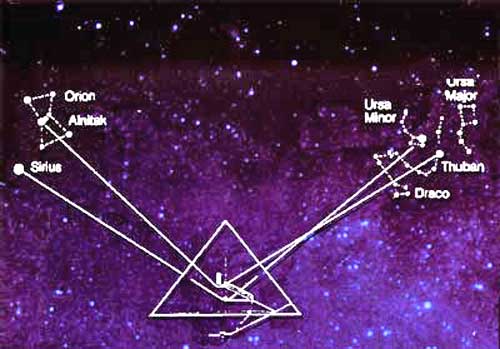
1 comentario:
Como es el gobierno pasado y actual de los hopis???
Publicar un comentario